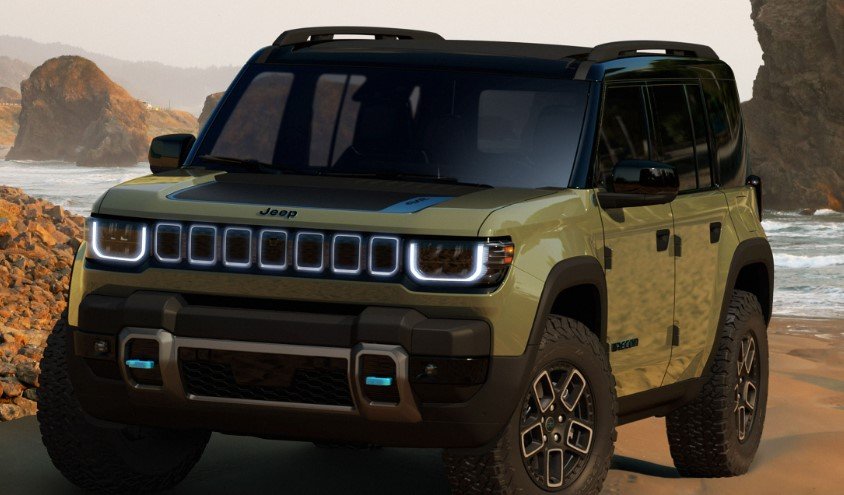Researchers at Karlsruhe Institute of Technology have unveiled a groundbreaking drivetrain system called Line Traction that helps off-road vehicles tackle tough terrain like wet meadows and steep slopes. This innovation, developed with an industry partner, replaces traditional differential gears with independent gearboxes on each wheel, allowing better grip and smoother handling in challenging conditions.
What Makes Line Traction Stand Out
This new system addresses long-standing issues with conventional drivetrains in agricultural and off-road machines. Traditional setups often fail when one wheel slips, causing the vehicle to lose power and get stuck.
By using individual speed control for each wheel, Line Traction ensures all wheels work together effectively. It combines the flexibility of open differentials for cornering with the power of locked ones for rough ground.
Tests show vehicles equipped with this tech can navigate areas that were once impossible, such as loose soil or snowy fields. The design keeps the core drivetrain simple, making it easy to integrate without adding extra weight.

Experts praise its potential to reduce accidents in farming, where slippery slopes lead to many incidents each year. With global agriculture facing more extreme weather, this could be a timely fix.
How the Technology Works
At its heart, Line Traction uses smart gearboxes that adjust wheel speeds automatically based on the terrain. This means the system detects slips and redistributes power in real time.
Unlike older systems that lock wheels together or let them spin freely, this one balances force and speed precisely. A central drive unit, powered by either a combustion engine or electric motor, feeds energy to each wheel independently.
In practice, a tractor with Line Traction can climb a 30-degree slope while maintaining full traction, something standard models struggle with. Developers tested it on slope mowers, which often work on uneven land near highways or mountains.
The tech also supports emission-free options, aligning with the push for greener farming tools. As electric vehicles grow in popularity, this system fits right in without major redesigns.
One key feature is its compatibility with existing vehicles, allowing retrofits that boost performance without high costs.
Key Benefits for Users
Farmers and operators gain big from improved safety and efficiency. Vehicles no longer stall on muddy fields, cutting downtime and boosting productivity.
Here are some standout advantages:
- Better traction on steep or wet surfaces, reducing slip risks.
- No need for manual adjustments, as the system handles changes automatically.
- Lower maintenance costs since it avoids complex differential repairs.
- Enhanced fuel efficiency by optimizing power distribution.
In regions like Europe, where hilly farmland is common, this could transform how crops are managed. Recent data from agricultural reports show that terrain-related accidents drop by up to 40 percent with advanced drivetrains.
It also opens up land that was hard to access, letting machines handle tasks once done by hand. This saves time and labor in an industry facing worker shortages.
Real-World Applications and Tests
Line Traction has been tested on tractors and slope mowers, proving its worth in real scenarios. For instance, it powers through wet meadows where standard vehicles bog down.
In mountainous areas, it helps maintain meadows and prevent erosion without risking operator safety. Highway maintenance crews could use it for mowing along steep embankments.
| Application | Terrain Challenge | Line Traction Solution |
|---|---|---|
| Farming Tractors | Wet, muddy fields | Adjusts wheel speeds for steady pull |
| Slope Mowers | Steep hillsides | Prevents slipping with individual gear control |
| Mountain Meadow Care | Loose, uneven ground | Maximizes force to all wheels evenly |
| Highway Maintenance | Embankments and ditches | Enables safe cornering on slopes |
These applications tie into broader trends, like the rise of autonomous farming tools seen in recent innovations from companies worldwide.
Early adopters report smoother operations and fewer breakdowns, especially in bad weather. With climate change bringing more rain and floods, such tech is crucial for food security.
Future Impact on Off-Road Industries
Looking ahead, Line Traction could expand beyond agriculture to construction and emergency vehicles. Its electric compatibility supports the shift to sustainable energy, with global EV sales in off-road sectors expected to rise 25 percent by 2030.
Developers at KIT plan further refinements, including AI integration for predictive traction control. This might link with weather data to prep vehicles for upcoming conditions.
As industries seek reliable solutions for tough environments, this tech sets a new standard. It builds on recent advances in hybrid drives, making off-road work safer and more efficient.
What do you think about this innovation? Share your thoughts in the comments and spread the word to fellow enthusiasts.








